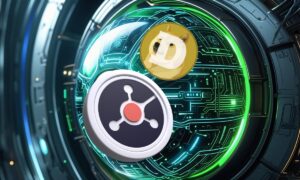In the past few years, the world has embraced non-fungible tokens (NFTs) as the mainstream media, celebrities, athletes, and even corporations entered the space. The innovation has captured the imagination of global artists and collectors, spurring a new economic activity in the art world. Simply, NFTs are disrupting a once-closed traditional art market, creating new communities of collectors and artists as well as giving art lovers more access to the art.
Artfi, an NFT marketplace and platform, aims to revolutionize the traditional art industry, focusing on democratizing the blue-chip fine art industry, giving the average art lover opportunities to own part of these million-dollar fine art pieces. We spoke to Artfi’s founder, Asif Kamal, to have a deeper understanding of how everyone can participate in the financial upside of these precious and high-value fine art pieces.
Can you give us a brief background on yourself and what Artfi is all about?
I am an Art Connoisseur and I started my first gallery Alturaash Art in 2010 to promote Middle Eastern and South Asian Modern and Contemporary Fine Art. We have been working extensively in the promotion, publication and representation of various artists from our art house. Alturaash is now an art house that is primarily into exhibitions & auctions of fine art, memorabilia, and automobiles.
I started building Artfi in the early months of 2022. Artfi is all about democratizing access to blue-chip art investing so that everyone can participate in the financial upside of the world’s most prestigious asset class. Thanks to Artfi, retail investors will be able to own a stake in painting which would otherwise be out of reach.
Artfi accepts consignments of very high-value works of fine art and then fractionalizes the ownership of the artworks as NFTs so that investors can own a stake in the painting. It’s a revolutionary way to do art-related business and it means that an entire generation of young people will be able to invest in artworks that were out of the reach of their parents. It’s a major reversal of trends in other asset classes, like real estate for example, where most young people are effectively excluded from owning property in some entire cities.
What is Artfi’s competitive advantage and what problems are you looking to solve in the fine art industry?
The fine art industry caters to ultra-high-net-worth individuals. This isn’t a market problem per se, because for all its opacity and exclusivity the art market performs remarkably well. However, it is a social problem because it means that people who really love fine art are habitually excluded from investing in what they love.
It could also be viewed as a social justice issue because this division around who gets to invest in blue-chip fine art exacerbates economic inequality. During recessions and in high inflation environments, retail investors have a little place to allocate their capital whereas the ultra-wealthy have access to fine art which tends to perform well when other asset classes are struggling.
With Artfi, users are able to buy and sell fractions of blue-chip fine art using NFTs, could you explain to our readers how the Artfi platform works and what fractionation is all about?
Yes, absolutely. The Artfi platform is very user-friendly to purchase a stake in a high-value work of fine art. Here’s how it will work: A user can connect their Web3 wallet to our minting page, pay for an NFT that we have on offer in crypto, and then hold the NFT in their Web3 wallet. It’s as simple as that.
Their NFT then represents a stake in a high-value work of art which Artfi will custody on behalf of the NFT holders who can trade their NFTs on the secondary market. When Artfi sells the underlying painting in the future, the NFT holders will receive their allotted portion from the proceeds of the sale.
It’s all very convenient and takes advantage of the functionality of the Web3 ecosystem, such as 24/7 liquidity and permissionless trading.
The NFT space has grown a lot over the past few years, what made Artfi select NFTs over a conventional digital platform?
We are at the beginning of a major trend which will last for the coming decades, that being the tokenization of real-world assets. From a technological standpoint, it doesn’t make sense to trade any asset that isn’t a digital token. The only reason people trade non-tokenized assets is that they have to, as the financial system was built on top of outdated decades-old technology. It shouldn’t take days to settle a transaction, as is the case with stocks.
It is only through the assurance of digital uniqueness provided by NFTs that Artfi’s product offering makes sense. It’s what distinguishes the copy-pasting of digital images from the trading of digital assets.
Ultimately, Artfi believes that web3 tools of Web3 are empowering, even if they may be slightly intimidating to new users at first. That’s why we are making the onboarding process very seamless and showing people how comfortable it can be to buy and sell art.
There has been a lot of talk on the environmental impacts that NFTs have. Kindly walk us through how Artfi deals with these environmental impacts of NFTs.
As you know, Ethereum recently transitioned to a PoS chain through an event that was dubbed The Merge. It didn’t get very much hype in the mainstream media because of how bearish the market sentiment was at the time (and still is). Yet the significance of The Merge cannot be overstated. It dramatically improved the energy efficiency of the Ethereum blockchain and made it ESG-compatible. Not only is this good for the reduction of carbon emissions but it means that investment funds with an ESG mandate can allocate to Ethereum.
Artfi is based on Polygon, arguably the most green-forward chain. Polygon recently released an entire Green Manifesto outlining its commitment to going carbon-negative this year and from what I hear, the goal is very feasible.
At the moment, the Artfi platform is still in development but so far, are there any success stories you can share with us?
We have recently built a physical representative office in Dubai, the world’s foremost Web3 city. We chose to situate ourselves in Dubai because of its incredible vision of becoming the #1 metaverse city in the region, and possibly in the world. There is strong momentum here, which was recently punctuated by the Burj Khalifa being lit up with the Binance logo and colours to celebrate its new license.
In the summer of 2022, we raised $3.26 million from influential entrepreneur, investor and art collector Mr Raza Beig which kickstarted our process of team expansion.
We now have $16 million of fine art assets under management that will be sold to the public through our NFT sales in 2023.
What products should the Artfi community be excited about in the near future?
We are on the precipice of announcing our Genesis NFT Sale which will allow investors to own a piece of a painting valued at over $3 million by one of the most successful living artists. It’s the sort of painting that would normally be out of reach for 99% of investors. Thanks to Artfi, this painting can serve as the cornerstone of many new art collections and asset-backed NFT portfolios.
In the same breath, what are the long-term future plans for Artfi, let’s say, in the next five years?
Artfi is going to create the first NFT marketplace devoted entirely to fine art NFTs. Until now, NFTs have developed a reputation for crudely animated imagery which has distracted from the larger potential of NFTs to transform the way value is exchanged on the art market. As a result, major NFT marketplaces like Opensea are overrun with cartoon images that have no artistic value.
We will create a venue where people are guaranteed to only encounter art-backed digital assets of the highest quality. Our expert curators with the highest credentials in fine art and culture put us in a unique position to design a Web3 art investment experience that redefines what an NFT can be. The days of NFTs being associated with obscenely priced cartoons are about to come to an end, as we usher in a new era of fine art NFTs.



































